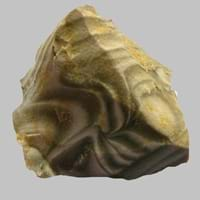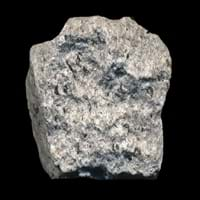Definition
Flint is a hard type of sedimentary rock that produces a small piece of burning material when hit by steel
Porphyry is a reddish-brown to purple igneous rock containing large phenocrysts of various minerals embedded in a fine-grained matrix
Discoverer
Unknown
Unknown
Etymology
From Old English flint - a type of rock mainly known for high hardness and for giving off sparks when struck
From Old French porfire, from Italian porfiro and in some cases directly from Latin porphyrites
Class
Sedimentary Rocks
Igneous Rocks
Sub-Class
Durable Rock, Hard Rock
Durable Rock, Hard Rock
Group
Not Applicable
Plutonic
Other Categories
Fine Grained Rock, Opaque Rock
Fine Grained Rock, Opaque Rock
Texture
Banded, Rough
Porphyritic
Color
Black, Brown, Green, Grey, Red, White
Black, Brown, Colourless, Green, Grey, Red, Rust, White
Durability
Durable
Durable
Scratch Resistant
Yes
Yes
Appearance
Glassy or Pearly
Dull
Interior Uses
Decorative Aggregates, Homes, Interior Decoration
Decorative Aggregates, Interior Decoration
Exterior Uses
As Building Stone, As Facing Stone, Garden Decoration, Office Buildings, Paving Stone
Garden Decoration, Paving Stone
Other Architectural Uses
Curbing
Curbing
Construction Industry
Arrowheads, Cutting Tool, Spear Points
Construction Aggregate
Medical Industry
Not Yet Used
Not Yet Used
Antiquity Uses
Artifacts
Artifacts, Monuments, Sculpture
Commercial Uses
Creating Artwork, Gemstone, In fire-starting tools, Manufacture of tools, Metallurgical Flux, Jewelry, To ignite fire, Used in flintlock firearms
Creating Artwork, Gemstone, Jewelry
Types
Not Available
Rhomb Porphyry
Features
Clasts are smooth to touch, Easily splits into thin plates, Has High structural resistance against erosion and climate
Generally rough to touch, Is one of the oldest rock, Surfaces are often shiny
Archaeological Significance
Monuments
Not Yet Used
Used
Famous Monuments
Not Applicable
Data Not Available
Sculpture
Not Yet Used
Used
Famous Sculptures
Not Applicable
Data Not Available
Pictographs
Not Used
Not Used
Petroglyphs
Not Used
Not Used
Figurines
Not Yet Used
Used
Formation
Flint is formed by the decomposition and compaction of various organisms such as sponges and diatoms under the water.
Porphyry is formed in two stages: the magma cools slowly deep within the crust or the magma is cools rapidly as it erupts from a volcano, creating small grains that are usually invisible to naked eye.
Mineral Content
Silicon
Biotite, Chert, Feldspar, Garnet, Graphite, Quartz, Silica
Compound Content
Silicon Dioxide
Aluminium Oxide, CaO, Iron(III) Oxide, Potassium Oxide, MgO, Sodium Oxide, Silicon Dioxide, Titanium Dioxide
Types of Metamorphism
Not Applicable
Burial Metamorphism, Cataclastic Metamorphism, Contact Metamorphism, Hydrothermal Metamorphism, Impact Metamorphism, Regional Metamorphism
Types of Weathering
Not Applicable
Biological Weathering, Chemical Weathering, Not Registered
Types of Erosion
Chemical Erosion, Coastal Erosion, Water Erosion
Chemical Erosion, Coastal Erosion, Glacier Erosion
Grain Size
Very fine-grained
Fine Grained
Fracture
Conchoidal
Irregular
Porosity
Highly Porous
Less Porous
Compressive Strength
Not Available
Cleavage
Non-Existent
Imperfect
Specific Gravity
2.5-2.8
2.5-4
Transparency
Translucent to Opaque
Translucent to Opaque
Density
2.7-2.71 g/cm3
2.5-2.52 g/cm3
Specific Heat Capacity
Not Available
Resistance
Heat Resistant, Impact Resistant, Pressure Resistant, Wear Resistant
Heat Resistant, Impact Resistant
Deposits in Eastern Continents
Asia
Azerbaijan, China, Russia
China, Kazakhstan, South Korea, Thailand, Turkey, Vietnam
Africa
Not Yet Found
Egypt, Ethiopia, Ghana, South Africa
Europe
Austria, Belgium, Cyprus, Denmark, France, Germany, Italy, Malta, Netherlands, Poland, Portugal, Romania, Spain, Sweden, Switzerland, Turkey, Ukraine, United Kingdom
Finland, France, Germany, Great Britain, Hungary, Iceland, Ireland, Italy, Netherlands, Norway, Romania, Sweden, Switzerland
Others
Not Yet Found
Greenland
Deposits in Western Continents
North America
USA
Canada, Cuba, Jamaica, USA
South America
Bolivia
Bolivia, Brazil, Colombia, Ecuador, Paraguay
Deposits in Oceania Continent
Australia
New Zealand, South Australia
New South Wales, New Zealand, Western Australia
All about Flint and Porphyry Properties
Know all about Flint and Porphyry properties here. All properties of rocks are important as they define the type of rock and its application. Flint belongs to Sedimentary Rocks while Porphyry belongs to Igneous Rocks.Texture of Flint is Banded, Rough whereas that of Porphyry is Porphyritic. Flint appears Glassy or Pearly and Porphyry appears Dull. The luster of Flint is vitreous while that of Porphyry is dull. Flint is available in black, brown, green, grey, red, white colors whereas Porphyry is available in black, brown, colourless, green, grey, red, rust, white colors. The commercial uses of Flint and Porphyry are creating artwork, gemstone, in fire-starting tools, manufacture of tools, metallurgical flux, jewelry, to ignite fire, used in flintlock firearms.










